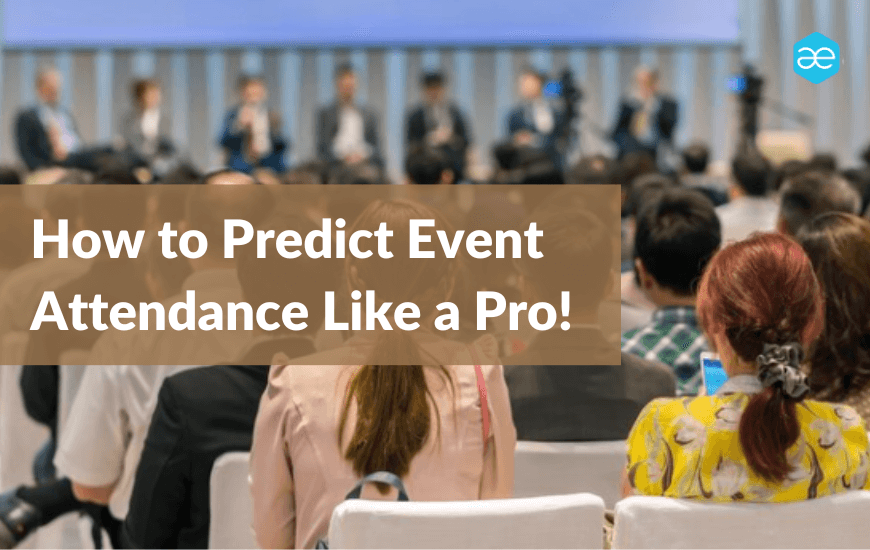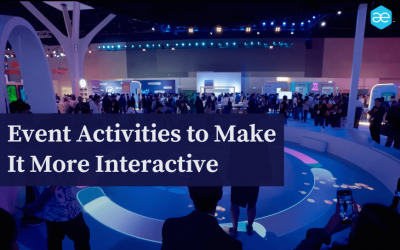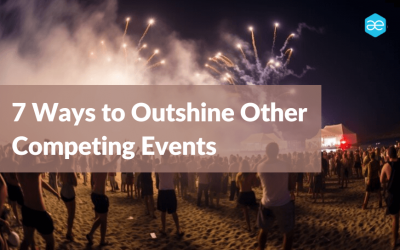Event organizing is all about handling unexpected hiccups with grace. And you, our dear organizers, are masters of improvisation. You are adaptable, have expertise and the ability to stay calm under pressure.
At this point, we’re pretty convinced that you are ninjas. Think about it!
From logistics to managing vendors, coordinating schedules, and ensuring every detail falls into place. Is there anything that you can’t do? 🤔
Okay, wait, we think there is 🤭
Have you ever had sleepless nights before an event thinking about the weather or the number of attendees that are going to show up?
While we can’t control the former for you, we do know how to give you insights on the latter.
Today, we’re here to help you unload the missile of predicting event attendance. Don’t worry, we’ve decrypted the codes for you. Read on!
Techniques for Attendance Prediction
There are various techniques that you can adopt to score a high chance of precision at forecasting attendance. Here are the top three:
1. Become an Attendee (Read: Spy 🤫 )
We’ve said it before, we’ll say it again – the most important step in throwing the most epic event is understanding your crowd! And guess what? Your competitors’ events are like a goldmine of real-time insights into what gets people buzzing.
Channel your inner Sherlock Holmes and observe:
- Demographics: Tune in to the age, gender, and profession of the attendees. Knowing who’s in the room will help you nail your marketing.
- Engagement Levels: Studying attendee interactions with different elements of the event – sessions, exhibits, networking zones – will assist you in hosting an event that captivates.
- Attendance Patterns: Track attendance throughout event duration. Are there peak times or specific sessions that draw larger crowds? This insight can guide your scheduling and marketing strategies.
- Promotional Strategies: Keep a tab on what worked for them in marketing – social media, emails, partnerships – to boost attendance.
2. Surveys and Feedback Forms have Powers
We’re no fortune tellers, but your surveys and feedback can be! It’s like having a direct line to your audiences’ thoughts and inclinations.
Conversations and feedback during or after the event can provide valuable qualitative data and answer questions like:
- Which elements of the event gauged their interests?
- What are their days and time preferences?
- Why did they want to attend the event?
- Are there any barriers that prevent them from showing up?
- What did they like or dislike and what they felt was missing from the event?
By piecing together these insights, you can get a more comprehensive understanding of attendance patterns and aid in making more accurate predictions for your upcoming event.

3. Let Social Media Tingle Your Spidey Sense
Follow the web of social media activity and eavesdrop on the digital chatter around your event niche.
- Monitoring likes, comments, and shares on your event-related posts
- Analyzing the sentiments (positive, neutral, negative) behind the social media conversations
- Studying their age, profession, interests, location
- Identifying and tracking relevant hashtags and mentions
- Keeping tabs on ticket sales or registration pages
All these insights can help you predict your footfall. The online vibes can also guide you to fine-tune your marketing game to attract more crowds!
Tools for Attendance Prediction

There are various tools that can aid you in predicting foot traffic. These tools gather info, crunch numbers, and decode data to predict who’ll join the fun. Take a look at a few of them:
1. Google Trends
Use Google Trends to track search terms, spot surges in interest, and even pinpoint where your fans are buzzing the most. Here are a few awesome features that it offers:
- Search Volume Trends: Lets you analyze search volume for specific keywords related to the event. This can indicate the level of buzz and assist in attendance prediction.
- Geographic Insights: Provides data based on geographic regions or countries. Noticing where the searches are coming from can help anticipate attendance from those areas.
- Seasonality and Historical Data: Allows you to check whether there are specific months or times of the year when interest peaks by providing historical data and seasonal trends for similar events
- Comparison with Similar Events: Endorses comparison of search trends between your and similar events of the past. This can be of major help in forecasting attendance.
Remember, as much as Google Trends rocks, use it in conjunction with other predictive methodologies. Factors like economic conditions, external marketing efforts, and unforeseen occurrences can significantly impact attendance beyond what search trends may indicate.
2. Google Analytics
This is another fabulous tool that can help you gain insights to predict event attendance. Here are some helpful features:
- Website Traffic Patterns: Helps you to analyze website traffic data and can provide awareness of the interest the audience has in your event.
- Visitors Demographics and Interests: Allows you to access the demographics and interest data of the audience visiting your website. This can help you pinpoint potential attendance for your event.
- Conversion Tracking: If your event requires registrations or ticket purchases on your website, using this tool can help you measure how well it turns visitors into attendees. This can help you predict attendance effectively for your event.
- Real-Time Analytics: Spotlights sudden website traffic surges that may happen due to announcements or promotional activities. These spikes can hint at possibly forecasting a bigger turnout.
Keep in mind: Google Analytics centers on website analysis. Without a dedicated website for your event, its usefulness might be limited.
3. Social Media Analytics
Various Social Media Analytics tools can work wonders in forecasting event attendance by providing valuable insights into user behavior, preferences, and trends. One such tool is TweetDeck. Here’s how it can come to your aid:
- It allows you to create custom columns to monitor real-time specific keywords or mentions related to your event.
- You can follow event-specific hashtags that can indicate the online buzz around your event.
- You can analyze audiences’ interactions in the form of likes, replies, and retweets on tweets related to your event to get a better understanding of how people are responding.
- You can monitor tweets from a specific location with the help of its geographical filtering feature.
This data-driven approach of social media analytics tools significantly enhances the ability to predict event attendance, which helps you to make well-informed decisions.

Parting Words
Getting attendance predictions spot on involves a lot of numbers, technological tools, and a profound knowledge of what makes people turn up. Using smart techniques and the right tools can do the trick for you.
This not only facilitates better logistical planning for you but also makes sure to have an awesome experience in store for whoever walks through your doors.







